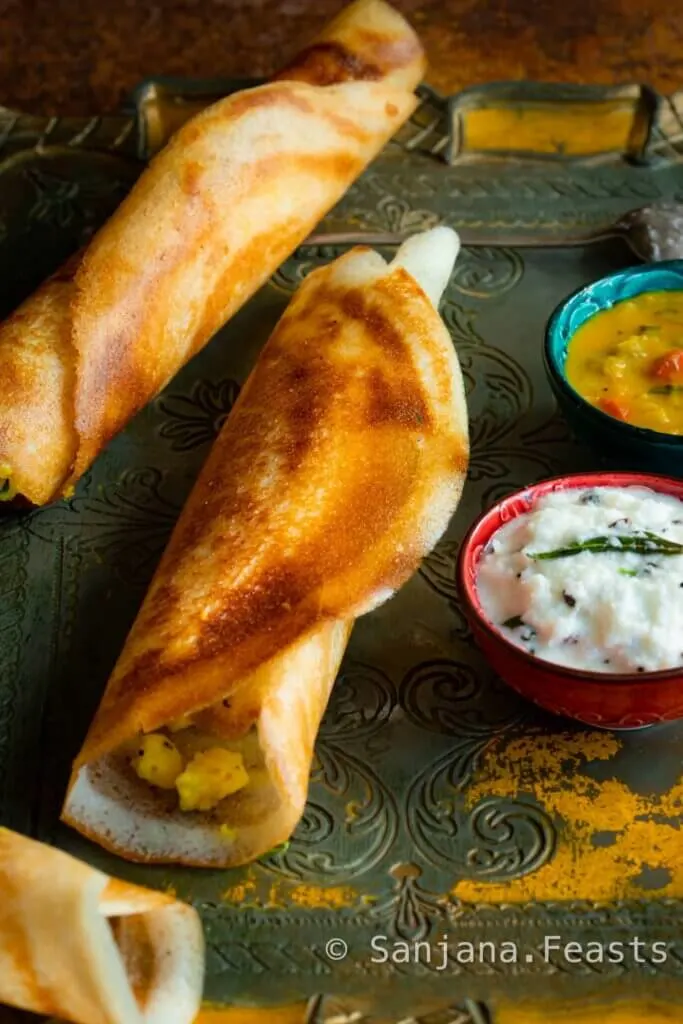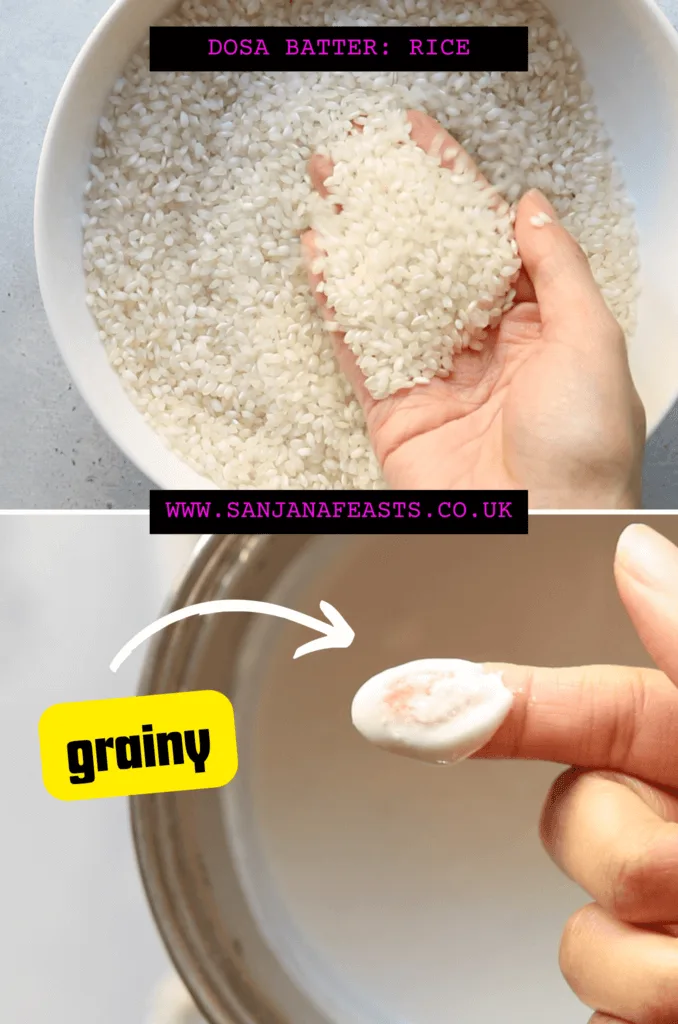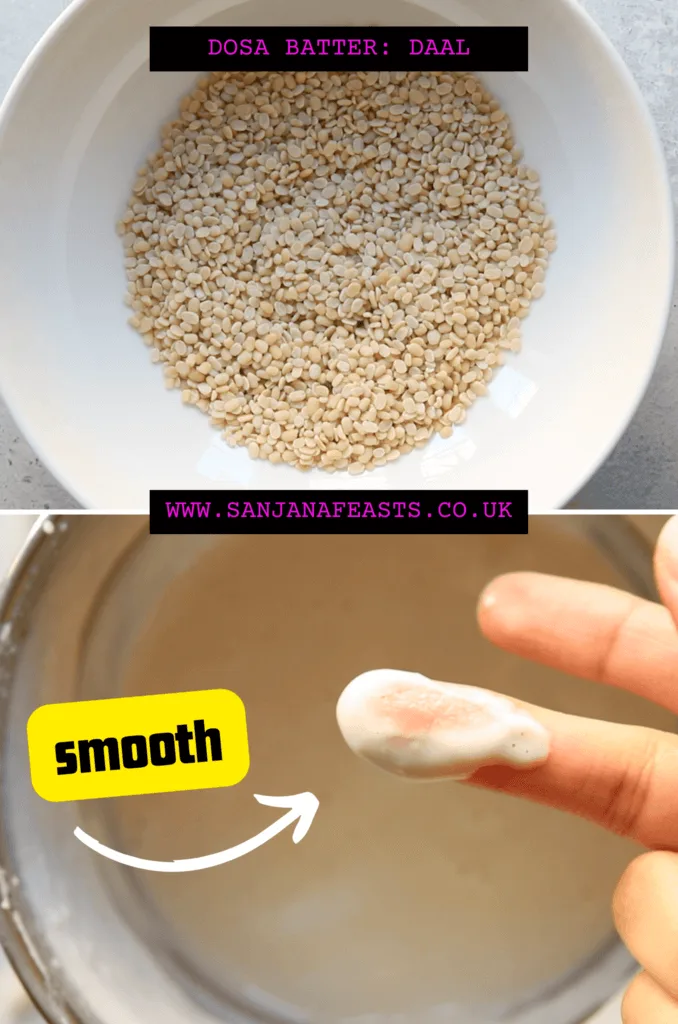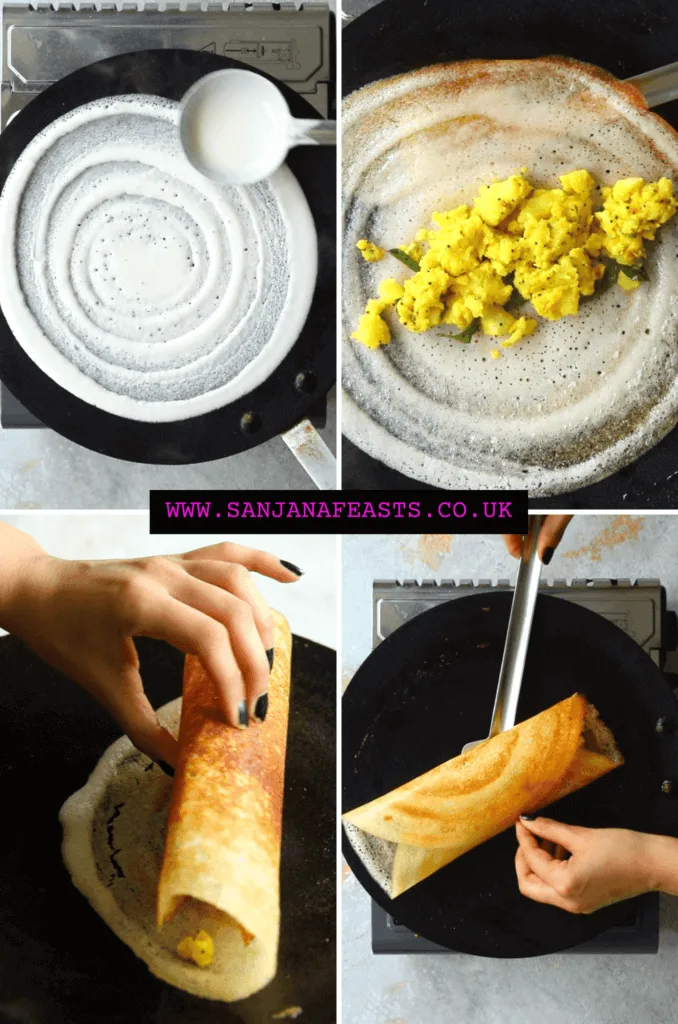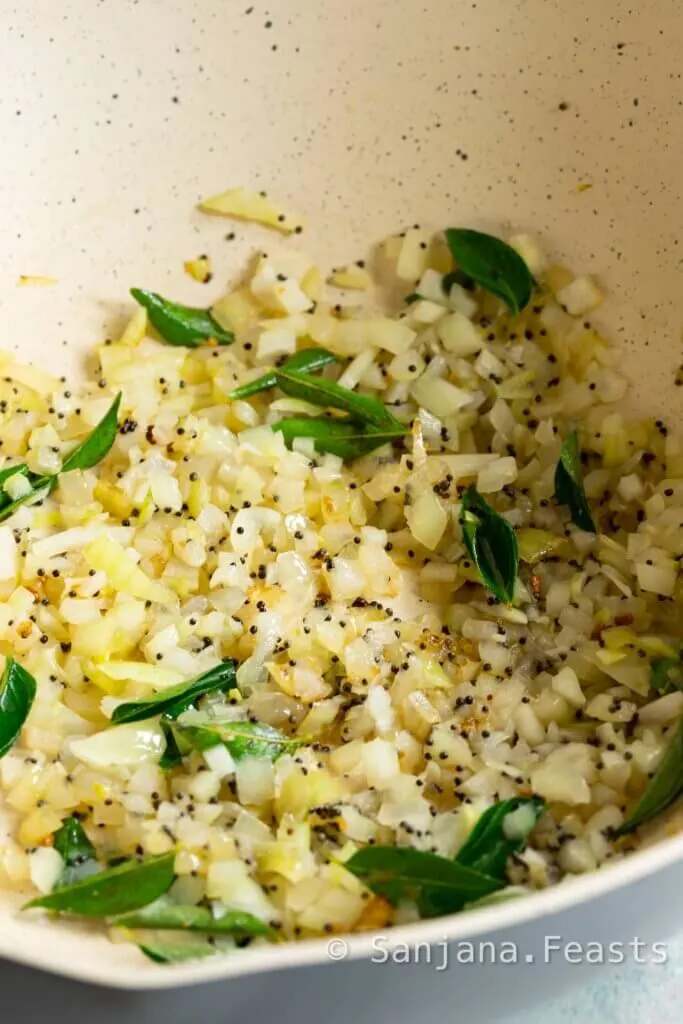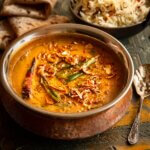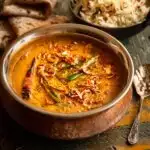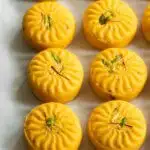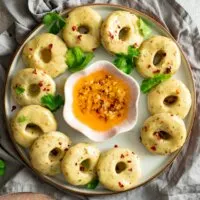Watch how to make Masala Dosa with my step-by-step recipe and video. From fermenting dosa batter, to learning how to spread thin dosa, as well as dosa cooking techniques, this is the ultimate guide to making Masala Dosa at home.
A love letter to dosa
A meltingly-crisp dosa is one of life’s greatest pleasures. I remember biting into dosa concealing the fluffiest potato filling throughout my childhood. A bowl of sambar and chutney for dunking. Growing up in a Gujarati home, this was a special treat from South India’s unique cuisines. Everybody loves dosa! Since I didn’t grow up sinking my teeth into them regularly, learning how to perfect everything from dosa batter and filling, to mastering the spreading and cooking technique has been a journey of discovery for me. My nose buried deep in cookbooks, up to my elbows in dosa batter (it really is better when you mix it by hand), and watching pro dosa makers, I’ve developed a recipe that never fails to impress family and friends. Here it is.
What is Masala Dosa?
Masala Dosa is arguably one of South India’s most famous dishes. It’s made with a thin and crispy crepe-like batter and conceals a spicy potato filling. This dish is also known as Masale Dosey. Indeed, it’s a perfect breakfast, lunch or dinner option that will forever leave you craving for more. Hold on to your tawa, I’m about to share some tips on how to perfect this dish, and also showcase some unique versions of this beloved dish.
Tips for Making the Perfect Masala Dosa
Making a perfect Masala dosa is all about getting the right ingredients and the perfect cooking technique. Here are some tips to help you make your perfect Masala dosa.
1. Invest in a good quality tawa or non-stick pan
A good quality pan will help you cook the dosa evenly and prevent the batter from sticking to the pan. Opt for the flattest well-seasoned cast iron or anodised aluminium tawa. In a pinch, you can also use a non-stick frying pan but the dosa may not be as crispy as cast iron-cooked dosa.
2. Choose the right rice
Idli rice (parboiled rice) has the ideal amount of starch for making dosa at home. Add a small amount of Basmati to heighten the aroma. If you can’t find idli rice, another short grain rice like sona masoori or even Thai Jasmine rice works well. You will also need white urad daal (skinless black gram).
3. Soak the rice and daal
Soak the rice and white urad daal for at least 6 hours, or up to 8 hours. This will ensure the rice and lentils are well hydrated so they grind and ferment properly.
4. Grind the rice and daal separately before mixing
The rice batter should be mostly smooth, but still a little grainy, like that of a gentle exfoliator. This will produce crispy dosa. It might seem tedious but this is the trick to getting the perfect, spreadable consistency for dosa. The daal, methi and poha batter should be totally smooth. Its’ viscosity is what gives the batter a uniform body. Mix the two batters together at the end using your fingers. The dual texture batters create the perfect dosa!
5. Ferment the batter well
The key to making a perfect dosa is to ferment the batter well. 8-10 hours will usually suffice, but if it’s cold, it can take longer. Fermentation helps to create the right texture and sour flavour of the dosa. Look for billowing air bubbles. Do not add salt until the very end, after the batter has fermented. Salt will slow down the fermentation process. Keep the dosa batter in a large, deep bowl, in a very warm place to encourage quick fermentation. Oh, and before stowing away, whip the batter with your fingers for 3-4 minutes. The heat from your hands warms it for speedy fermentation, too.
6. Use the right batter consistency
The consistency of the batter plays an important role in making the perfect Masala dosa. The batter should be thin enough to spread evenly on the pan but thick enough to hold the filling. Add no, or very little water when grinding the soaked rice and lentils. You can always add more water at the end but you can’t take it away!
7. Spread and cook the dosa over a medium heat
Cooking the dosa on medium flame ensures that it cooks evenly and gets a crispy texture all over the bottom. Temper the hot pan with a splash of water, then spread a very small amount of oil over the surface of the pan using half an onion or kitchen towel. Too much oil on a lukewarm pan will result in the batter sliding around all over the place. Not good. Use a medium hot pan (you can turn it down later) and very little oil until the batter is spread (then you can add more oil).
8. Spread the potato filling evenly
The potato filling is a crucial element in the Masala Dosa. Spread it evenly on the dosa to ensure that you get a bite of the filling with every bite of dosa.
9. Serve hot with chutney and sambar
Masala dosa is best enjoyed with coconut or tomato chutney and sambar (a stew-like preparation of daal and vegetables). Serve it hot to enjoy it at its best. They don’t hang around long.
Variations of Masala Dosa
Masala dosa has evolved over the years and has seen many variations. Here are some unique versions of this beloved dish:
- Rava dosa – Unlike the traditional dosa, rava dosa is made with semolina and rice flour. It’s crispy and thin and is usually served with coconut or tomato chutney.
- Mysore masala dosa – This version of Masala dosa originated in Mysore, Karnataka. It’s filled with a spicy red chutney made with garlic, red chilli, and onion.
- Cheese Masala dosa – This is a savoury version of the traditional Masala dosa where Cheddar or mozzarella cheese is added to the potato filling. It’s perfect for cheese lovers!
- Paneer Masala dosa – In this version, masala paneer is added to the potato filling. It’s a perfect breakfast option for people who love their protein.
- Onion Masala dosa – This version is made with chopped onion. It’s simple and so flavoursome. Add chillies or gunpowder (podi) for an extra kick. Masala Dosa is a dish that has gained worldwide recognition for its unique taste and versatility. It’s a perfect example of how Indian cuisine has evolved and adapted to different palates over the years.
Ingredients for making Masala Dosa Batter
Here’s a list of key ingredients you’ll need for making delicious homemade Masala Dosa batter. Idli rice – parboiled short-grain idli rice is available in South Asian supermarkets Basmati rice – any long-grain Basmati will do. It adds excellent flavour Poha – flattened rice flakes. These will make the dosa lovely and crispy. They do not need to be soaked prior to grinding Methi (fenugreek seeds) – these will add lots of flavour and encourage quick fermentation of the dosa batter Water – use water sparingly when grinding the dosa batter
Ingredients for making Potato Masala for Masala Dosa
Potatoes – any floury variety works best in this recipe. I use Maris Piper. Mustard seeds – black mustard seeds are ideal Asafoetida – also known as hing. This adds a potent alium flavour and aids digestion when cooking or serving with lentils. A little goes a long way. Curry leaves – wash them well and chop finely for the best flavour. You can also add them whole. Green chillies – as many as you dare! I use Indian Jwala finger chillies which are quite spicy. Ginger – grated fresh ginger adds a delicious zap of flavour Onions – white onions meld into the potatoes for a bright yellow colour but use red onions if that’s what you have. Ensure they’re diced – chunky is fine. Turmeric – ground turmeric for a colour as bright as spring’s first daffodils You will also need: oil (any cooking oil or ghee for a richer flavour), salt, fresh coriander leaves and stalks.
Masala Dosa for kids
Masala Dosa is a dish that is loved by people of all ages and is perfect for any time of the day. However, feel free to skip chillies and additional salt for kids.
Are Masala Dosa vegan?
Yes, this recipe is vegan friendly, provided you use oil and not ghee.
Are Masala Dosa gluten free?
This recipe for masala dosa is free from gluten. However, check the label on the asafoetida as many commercial brands contain wheat flour. You can always skip it.
How to make Masala Dosa | Masala Dosa Recipe
Remember, the key to making a good Masala dosa is to get the right ingredients, follow the tips to make it perfectly, and experiment with different versions to find your favourite one. Truth be told, cooking dosa on a tawa can seem like a daunting task, but with a little practice, anyone can master it. Here is a helpful step-by-step method to help you cook dosa on a tawa like a pro.
If you like this, you’ll love my recipe for 4 Indian Chutney Recipes
More recipes to savour and share
Love Sanjana Use this dosa recipe to make plain dosa (Sada Dosa), ghee dosa, butter dosa or even Uttapam. Spread the batter very thinly for an excellent Paper Dosa. The dosa batter can be made in advance and kept in the fridge for up to 3 weeks. You can prepare the potato filling 24 hours ahead, if necessary. Experiment and try adding your favourite toppings to make customised dosa. Masala Dosa are best eaten straight away. If you must reheat them, try popping them back onto the tawa or in a frying pan with a little butter or ghee to crisp them up again. Be sure to heat through thoroughly. Share this recipe

